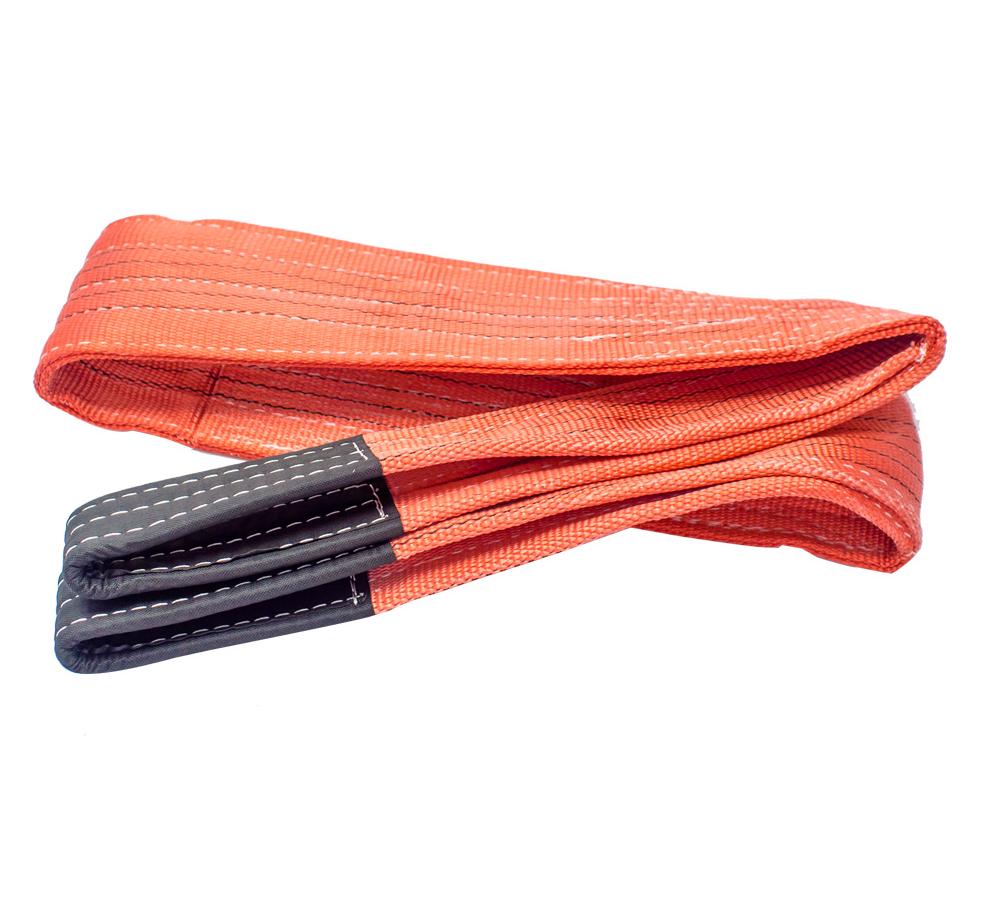In modern lifting and hoisting operations, polyester slings are widely used in factories, ports, buildings, logistics and other places because of their advantages such as light weight, softness, wear resistance, high strength and convenience. When many people choose and use polyester slings, they often notice that the surface of the slings has different colors: purple, green, yellow, gray, red, orange, blue... These colors are not randomly designed aesthetic decorations, but have clear meanings and are directly related to the rated load-bearing capacity of the slings. Understanding the relationship between the color and load-bearing capacity of polyester slings is crucial for the safe and reasonable selection and use of slings.
1. Why do polyester slings use colors to distinguish load-bearing capacity?
The color standard of polyester slings is an internationally accepted safety identification method. The purpose is to facilitate users to quickly identify the rated load of the sling on site and avoid accidents caused by misuse and overloading. Because the lifting operation environment is usually noisy, with a large number of people and tight time, it is impossible to check the instructions, carefully measure the thickness or calculate the tonnage every time. Therefore, using different colors to distinguish the load-bearing level is both quick and intuitive, which greatly improves the operation efficiency and safety.
In addition, color distinction is also conducive to management and inspection. Managers of warehouses and construction sites can check at a glance whether the specifications of the slings are fully equipped, whether there is any mixing or misuse, and it is also convenient to scrap or replace them regularly.
2. The relationship between the color and load-bearing capacity of polyester slings
The relationship between the color and load-bearing capacity of polyester slings comes from the European EN 1492-1 standard, ISO standard and domestic industry standards. These standards specify the rated load of slings corresponding to different colors. Although countries may differ slightly in details, they basically follow similar classification rules. Sling manufacturers produce according to standards, and the load-bearing capacity of polyester slings of different colors is strictly regulated and inspected to ensure that users are safe and reliable under the premise of reasonable use.
Polyester flat slings (flat belts) and ring slings (flexible slings) usually have information such as load-bearing capacity, length, use angle, material, etc. printed or sewn on the belt body or label, and color is the most intuitive identification.

3. The basic law between color and load-bearing capacity
In the standard regulations, each color corresponds to a specific rated load range. The darker the color and the wider and thicker the sling, the greater the load-bearing capacity of the sling. For example:
Light-loaded small-tonnage polyester slings usually use soft light colors, such as purple and green;
Medium-tonnage slings use brighter colors, such as yellow and gray;
High-tonnage slings use eye-catching red, orange, or even blue and brown.
The choice of each color is not random, but after long-term standardized practice, it fully considers the recognition on site and the convenience of safety management.
To give a simple example: in most standards, purple polyester slings have the lowest rated load-bearing capacity, suitable for light loads of about 1 ton; green is suitable for about 2 tons; yellow is suitable for 3 tons; gray is about 4 tons; red is used for 5 tons; orange can reach more than 10 tons; blue and brown are often used for lifting of larger tonnage.
The corresponding relationship between color and load-bearing capacity is usually the rated load under ideal straight lifting and 0-7° angle. When the lifting angle changes, the sling is knotted, severely worn or the environment is harsh, the actual load-bearing capacity of the sling will be affected, so users should not only look at the color when using it, but also consider the use environment and status comprehensively.
4. Benefits of color identification
The color identification of polyester slings can not only quickly determine the rated load-bearing capacity, but also find problems in time on site to avoid danger. For example:
Improve efficiency: Workers do not need to read the label carefully or measure the size, they can choose the right sling by observing the color with the naked eye;
Reduce the error rate: Avoid using small-tonnage slings to lift large-tonnage goods to prevent overload and breakage accidents;
Easy to manage: Warehouse managers can classify, store and inspect according to color;
Standardize operations: Make the lifting work meet the requirements of standardized management and safety regulations;
Enhance the warning effect: The eye-catching color reminds the operator to pay attention to safety and not to mix them at will.
5. Several issues that need to be noted in actual use
Although there is a clear relationship between color and load-bearing, there are still some details that need special attention when using polyester slings:
Confirm the standard
The standards adopted by different countries and regions are not completely consistent. Some sling manufacturers produce according to European standards, while others produce according to Chinese standards. Therefore, the same color may correspond to different tonnages under different standards. Therefore, when using it, you must check the label on the sling to confirm the rated load-bearing, and cannot rely solely on the color.
Check the status
The load-bearing capacity of the sling depends not only on the color, but also on its wear, aging, broken wire, cut and other damage. Even if the color matches, if the sling is damaged, it cannot be used according to the original load-bearing.
Consider environmental factors
Polyester slings are highly wear-resistant, but are afraid of high temperature, sharp objects, chemical corrosion, etc. In high temperature and chemical environments, the performance of the sling will be reduced; when lifting heavy objects with sharp edges, a sheath or protective layer needs to be added to prevent the sling from being cut.
Pay attention to the use angle
The load-bearing capacity of the sling is different under different lifting methods. For example, two-point lifting, four-point lifting, and different angles will affect the load. Therefore, before lifting, the lifting method should be reasonably selected, and the safety load of the selected sling should be adjusted according to the angle.
Regular inspection
Even if the surface color of the sling is intact and the label is clear, the strength and safety of the sling should be regularly tested, and the aging and damaged slings should be scrapped in time according to regulations.
The color and load-bearing capacity of polyester slings are closely related, which is an internationally accepted safety management method. Slings of different colors correspond to different rated load capacities, which facilitates users to quickly select suitable slings, improve work efficiency, and reduce accident risks.
Specifically, color is one of the important identifications of the rated load of the sling, but it is not the only basis. When selecting and using slings, users must also combine the label, status, use environment and lifting method of the sling to comprehensively judge its safety.
In short, correctly understanding and applying the color identification of polyester slings is the basic safety knowledge that every lifting operator should have. Only by scientific selection, standardized operation, and regular inspection can the advantages of polyester slings be fully utilized to ensure the safety and efficiency of lifting operations.
As a professional polyester sling factory, we strictly produce each sling in accordance with international standards, using high-strength polyester fibers to ensure that the slings are bright in color, accurate in load-bearing capacity, and wear-resistant and durable. Slings of different colors have undergone rigorous load testing and quality inspections, and clearly marked with rated loads, which facilitates customers to quickly identify and correctly select in various lifting environments. We not only provide slings of various specifications and colors, but also can customize special sizes and protective covers according to customer needs, helping users to complete lifting operations more efficiently and safely. We are your trusted lifting safety partner.
www.reliablesling.com
reliablesling

